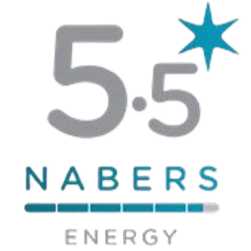
The nature of work has changed. Projects are more complex, timelines are tighter, and teams are increasingly cross-functional and distributed. In response, organisations have embraced more flexible working methods, and that’s where agile comes in. But exactly what are agile methods, and why have they become essential for modern businesses?
Agile methods refer to principles and frameworks designed to make project management more adaptive, collaborative, and responsive to change. Originally developed for software development, agile has grown beyond the tech world and is now widely used in industries like marketing, product design, and consulting. In this article, United Co. explores what agile means, how it works in practice, and why it’s especially well-suited to flexible, serviced office environments.
What Are Agile Methods?
To understand what are agile methods, it’s helpful to start with the Agile Manifesto, which was created in 2001 by a group of software developers looking for better ways to deliver projects. The core philosophy prioritises individuals and interactions, working solutions, customer collaboration, and responsiveness to change.
Agile is not a single tool or technique—it’s an overarching approach supported by popular frameworks like Scrum, Kanban, and Lean. Each of these encourages teams to work in short, focused cycles (often called sprints), make decisions collaboratively, and continuously improve through feedback. The goal is to create products, services, or solutions that evolve based on real-time input rather than rigid long-term planning.
Unlike traditional, linear project management models (often called “waterfall”), agile recognises that needs and priorities shift. Agile teams are structured to respond quickly and effectively, making the approach ideal for today’s fast-moving work environments.
Key Principles of Agile
Now that we’ve defined what are agile methods, let’s look at the principles that make them so effective:
Iterative Development
Rather than waiting months or years to deliver a final product, agile teams work in short development cycles—typically one to four weeks. At the end of each cycle, a usable result is delivered and reviewed. This approach promotes flexibility, improves time-to-market, and allows for early identification of potential issues.
Cross-functional teams
Agile thrives when people with different skill sets collaborate. A cross-functional team might include designers, developers, marketers, analysts, and project managers all working together. This helps eliminate silos, reduce delays caused by handoffs, and encourages a shared sense of ownership over the outcome.
Customer and Stakeholder Feedback
Continuous feedback loops are fundamental to agile. Stakeholders and end users are involved at every stage, providing input that informs priorities, identifies gaps, and shapes the product or service. This keeps development aligned with actual needs and increases customer satisfaction.
Transparency and Adaptability
Agile methods promote visibility through tools like task boards, burndown charts, and daily stand-up meetings. These rituals and resources ensure everyone is on the same page. And when priorities shift, teams can pivot quickly without losing momentum or morale.
Value-Driven Outcomes
Agile focuses on delivering business value early and often. Rather than getting caught up in completing lengthy task lists, agile teams prioritise work that creates meaningful results, whether it’s launching a feature, solving a problem, or improving a process.
Together, these principles foster a working environment where teams are more resilient, innovative, and aligned with their goals.
Read More about The Effective Tasks Delegation for Stronger Leadership and Team Growth
Agile in Action: Real-World Examples
To truly grasp what are agile methods, it helps to see how they’re applied across different industries:
- Tech and Software: In software development, agile is often synonymous with Scrum. Teams work in two-week sprints, setting sprint goals, holding daily check-ins, and conducting retrospective reviews to improve. New software updates are released frequently, allowing for faster response to bugs and feature requests.
- Marketing Teams: Agile marketing has gained popularity for managing fast-paced, data-driven campaigns. Kanban boards help teams visualise workflows, while sprints can be used to test campaign messages, create content calendars, and adapt strategies based on real-time analytics.
- Product Development: Agile product teams iterate on prototypes, gather feedback, and refine concepts before investing heavily in final production. This helps avoid misaligned solutions and reduces the risk of costly rework.
- Consulting and Services: Client-facing teams use agile to break projects into deliverable milestones. Continuous engagement ensures that project goals stay aligned with evolving client needs while regular reviews offer checkpoints for course corrections.
These examples show that agile’s adaptability makes it effective across sectors, from small startups to enterprise-level organisations.
Read More about How to Master Emotional Intelligent Leadership for Workplace Success
Why Agile Thrives in Shared and Serviced Workspaces
Workspaces designed for collaboration and adaptability are the perfect match for agile teams. Here’s why United Co. is an ideal environment for putting agile into practice:
- Space for Collaboration: Agile teams rely heavily on face-to-face communication, brainstorming sessions, and sprint planning meetings. United Co. provides access to breakout areas, meeting rooms, and quiet zones, allowing teams to shift fluidly between collaboration and focus.
- Mobility and Autonomy: Agile methods support self-organising teams that may need to scale up or down quickly. United Co.’s serviced office solutions offer the flexibility to adjust team size, desk configurations, and resource access without long-term constraints.
- Faster Decision-Making: Agile workflows depend on speed. Being in a shared space means teams can gather quickly, solve problems in real-time, and respond to feedback more effectively—especially when stakeholders or clients are co-located or nearby.
- Community and Cross-Pollination: Agile encourages learning from others. In coworking environments like United Co., teams benefit from networking with diverse professionals, sparking creativity, knowledge sharing, and unexpected collaboration opportunities.
Shared workspaces naturally support agile values such as adaptability, transparency, and rapid iteration, making them an ideal foundation for agile-driven teams.
Read More about How Peer Mentorship at Work Strengthens Teams & Drives Growth
So, what are agile methods? They’re a modern approach to project management built on flexibility, collaboration, and continuous improvement. Agile empowers teams to adapt to change, focus on outcomes, and deliver results that matter.
Whether you’re launching a new product, managing a fast-paced campaign, or delivering complex services, adopting agile workflows can boost your team’s performance and resilience. At United Co., we offer the dynamic environments and collaborative workspaces that agile teams need to succeed. Explore how our flexible office spaces can support your next sprint, iteration, or breakthrough idea.






